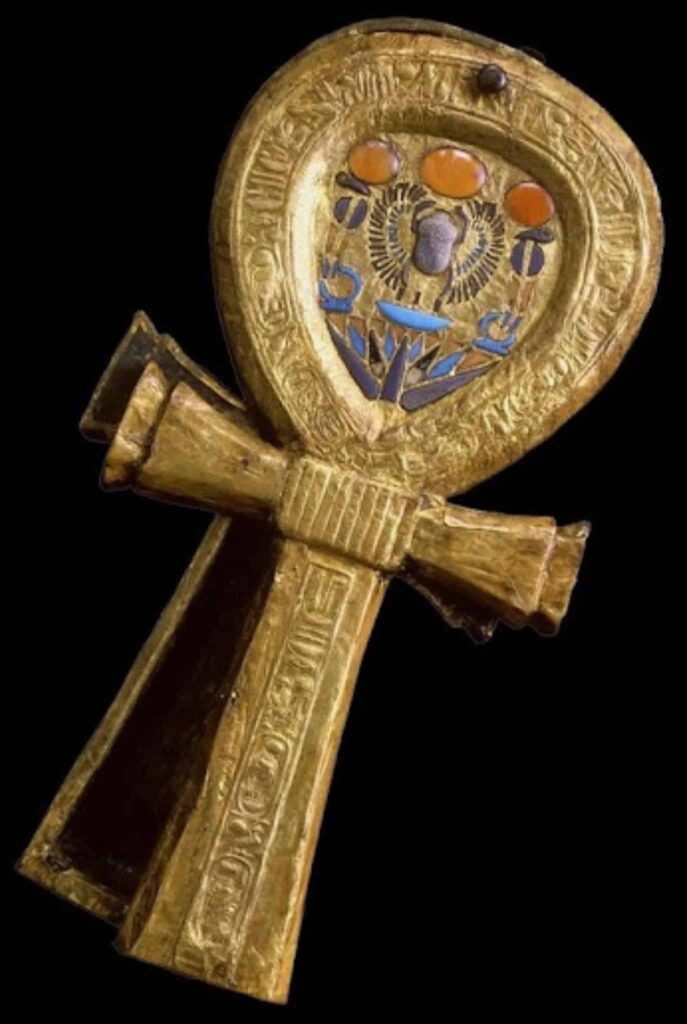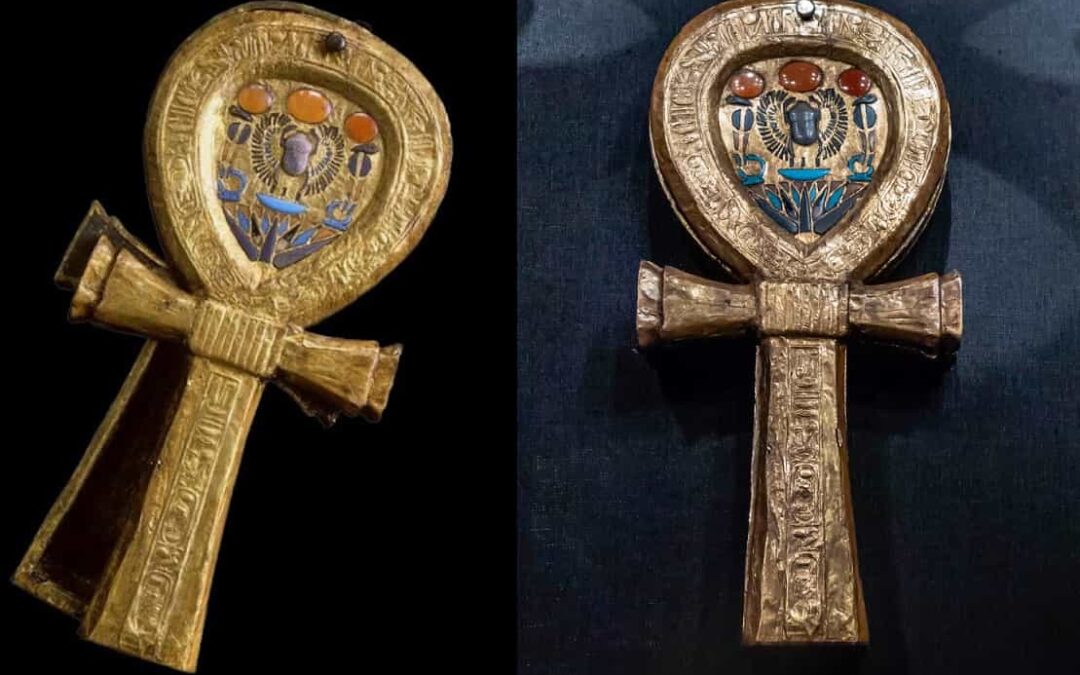Ankh-Shaped Mirror Case from the Tomb of Tutankhamun (c. 1341 BC – c. 1323 BC)
This exquisite artifact is a mirror case designed in the form of an ankh cross, crafted from gilded wood and discovered in the tomb of Tutankhamun. Measuring 27 cm in length and 4 cm in thickness, the case features a hinged design that allows access to the mirror within.
The lid of the case is adorned with the king’s name and titles, rendered in light relief and inlaid with semi-precious stones. These hieroglyphic inscriptions are set against a delicate lotus flower motif, symbolizing rebirth, with hues of soft blue enhancing the elegant design.
Flanking the lid are depictions of king cobras, each crowned with a carnelian solar disk. Their tails culminate in the “shen” symbol, representing eternity, and their turquoise blue contrasts beautifully with the lotus petals.
While mirrors were common in daily life, they also held significant funerary importance. Their ability to reflect light and images imbued them with a divine quality. In the context of the ankh, symbolizing life, the mirror was believed to aid in the deceased’s journey toward rebirth.






